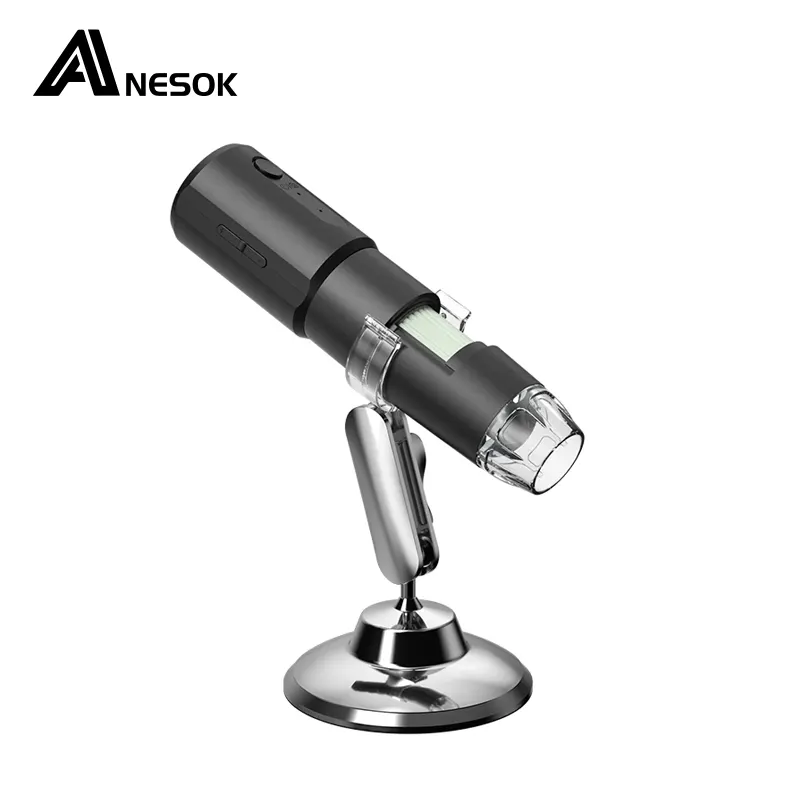- English
- שפה עברית
- Bosanski
- Punjabi
- O'zbek
- Español
- Português
- русский
- Français
- 日本語
- Deutsch
- tiếng Việt
- Italiano
- Nederlands
- ภาษาไทย
- Polski
- 한국어
- Svenska
- magyar
- Malay
- বাংলা ভাষার
- Dansk
- Suomi
- हिन्दी
- Pilipino
- Türkçe
- Gaeilge
- العربية
- Indonesia
- Norsk
- تمل
- český
- ελληνικά
- український
- فارسی
- தமிழ்
- తెలుగు
- नेपाली
- български
- Latine
- Қазақша
- Azərbaycan
- Slovenský jazyk
- ქართული
- Română
- Slovenski
- मराठी
- Srpski језик
- Hrvatski
- Eesti Keel
What is the Digital Microscope?
2024-06-29
A digital microscope is a microscope that utilizes a digital camera as its primary imaging device, replacing the traditional eyepiece. This allows for the capture and display of magnified images on a computer screen or other digital display. The digital microscope typically consists of a microscope body, a digital camera, and a computer or other device for viewing and analyzing the images.
How Does a Digital Microscope Work?
The digital microscope works by utilizing a combination of optics and digital imaging technology. The microscope body contains the objective lens, which magnifies the sample. The digital camera is mounted at the end of the microscope body and captures the magnified image. The image is then transmitted to a computer or other digital display for viewing and analysis.
Advantages of the Digital Microscope
There are several advantages of using a digital microscope compared to a traditional microscope:
Ease of Use: The digital microscope allows for easy viewing and analysis of magnified images on a computer screen. This eliminates the need to adjust the eyepiece and makes it easier to share and collaborate on microscopic images.
Portability: Digital microscopes are often designed to be compact and portable, allowing for easy transportation and use in various locations.
Image Capture and Storage: The digital microscope allows for the capture and storage of magnified images in digital format. This makes it easy to archive and retrieve images for future reference or analysis.
Enhanced Analysis: With the use of computer software, digital microscopes enable enhanced analysis of microscopic images. This includes features such as image measurement, annotation, and comparison of multiple images.
Remote Access: Digital microscopes can be connected to the internet, allowing for remote access and collaboration on microscopic images. This is especially useful for education, research, and quality control applications.
Applications of the Digital Microscope
The digital microscope has a wide range of applications in various fields, including:
Education: Digital microscopes are used in science classrooms to provide students with an interactive and engaging way to learn about microscopy and observe micro objects.
Research: In research laboratories, digital microscopes enable scientists to capture and analyze microscopic images with precision and accuracy.
Quality Control: Manufacturers use digital microscopes to inspect and analyze products and materials at the microscopic level, ensuring quality and compliance with standards.
Forensics: Digital microscopes are used in forensic science to analyze evidence and trace materials at the microscopic level.
Medicine and Biology: Medical professionals and biologists use digital microscopes to observe and analyze cells, tissues, and other biological samples.
In conclusion, the digital microscope is a powerful tool that combines the precision of a traditional microscope with the convenience and versatility of digital imaging. Its ease of use, portability, image capture and storage capabilities, enhanced analysis features, and remote access options make it an invaluable asset in various fields, including education, research, quality control, forensic science, and medicine.




